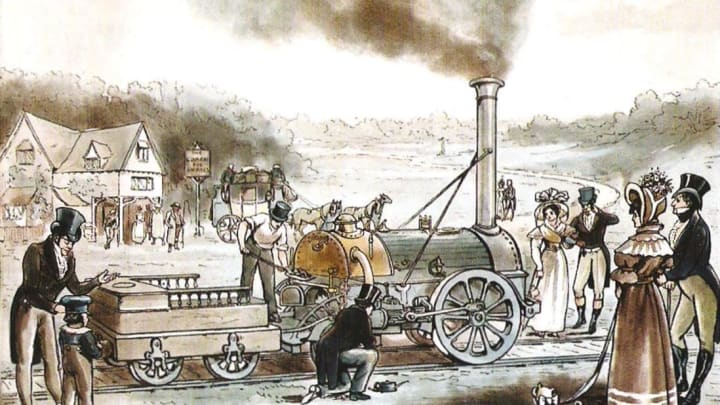Early Trains Were Thought to Make Women’s Uteruses Fly Out
By Janet Burns

Today, some of our biggest concerns about the dangers of transportation have to do with failing or clashing technologies—we’re afraid onboard GPS and other high-tech features will get mixed up, say, or even get hacked. A century and a half ago, though, our travel worries involved a lot less AI and much more spontaneous combustion and/or mutilation—imagined dangers that were just as scary, and (seemingly) just as real.
Cultural anthropologist Genevieve Bell explained to the Wall Street Journal TECH site that extreme, fearful reactions to new technology are age old, and have even picked up speed alongside our rate of innovation. Critics of early steam-spewing locomotives, for example, thought “that women’s bodies were not designed to go at 50 miles an hour,” and worried that “[female passengers’] uteruses would fly out of [their] bodies as they were accelerated to that speed”—which, for the record, they did and will not.* Others suspected that any human body might simply melt at high speeds.
Bell attributes this kind of reaction in part to the “moral panic” that a society experiences when particularly revelatory technological advances show up—specifically, ones which interfere with or alter our relationships with time, space, and each other:
“Cars? Clearly the same. Television? Absolutely. The Internet? Yes. Mobile phones? Yes. Fountain pens? Not so much. They may have changed our relationships to other people, but they didn’t really change our relationships to time and space.”
This society-wide panic often (unfairly) dotes on the threats an innovation might pose to women and children, and it didn’t end when we got over our locomotive fears. As automobiles gained traction in the early 1900s, they were seen by many as noisy, erratic “devil wagons” that women—thought to be prone to fainting, physical weakness, and out-of-the-blue bouts of hysteria—wouldn’t be able to control by themselves and shouldn’t be allowed to drive.
Nevertheless, women stuck up for their right to mobility. In 1909, 22-year-old Alice Ramsey managed to drive cross-country in a respectable 59 days and—having kept herself, her car, and her three female friends intact along the way—helped prove that women could be trusted behind the wheel.
Time’s also told us that, despite initial fears of the telephone’s possible downsides, chatting on the phone will not cause impropriety, possession, or electrocution in women. With any luck, it’ll turn out that the text-happy youngsters of today will still be able to speak in full sentences tomorrow.
[h/t: reddit user darinda777]
*It’s worth noting, though, that both men and women can risk straining or detaching certain soft connective tissues (such as those holding retinae or breasts in place) when they subject their bodies to truly rapid acceleration—so bungee jumpers be wary.